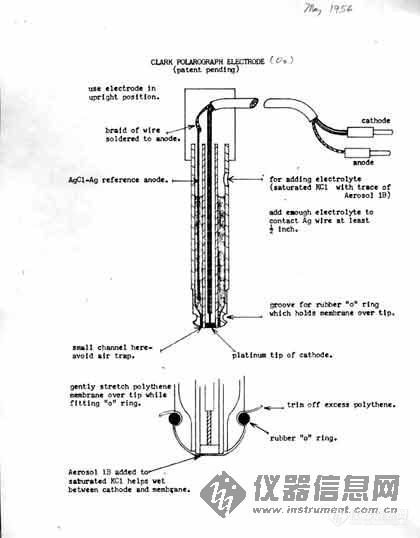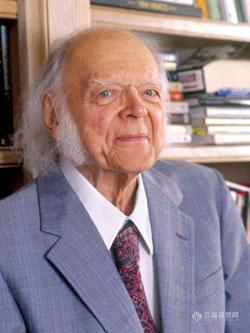通常我们认为,生物传感器的历史始于1962年,开山鼻祖即美国科学家Leland C. Clark.标志性事件为,Clark使用自制的如今以他的名字命名的氧电极测定了溶液中葡萄糖的浓度.此贴便是关于Clark及其工作的简介.
![]()
Leland C. Clark - a student
Leland C. Clark was born in 1918. When Leland Clark started high school and discovered that science was an academic discipline, complete with course work, lab sessions and grades, he said, "It was like discovering that you could get a grade for eating chocolate ice cream." One of the few students to score a perfect 100 on the New York State Regents science exam, Dr. Clark attended Antioch College and the University of Rochester School of Medicine, where he received his Ph.D. in biochemistry and physiology. Later, he taught at Antioch, the University of Cincinnati and the University of Alabama
![]()
Clark's patent of the oxygen electrode.
Clark oxygen electrodes have a thin organic membrane covering a layer of electrolyte and two metallic electrodes. Oxygen diffuses through the membrane and is electrochemically reduced at the cathode. There is a carefully fixed voltage between the cathode and an anode so that only oxygen is reduced. The greater the oxygen partial pressure, the more oxygen diffuses through the membrane in a given time. This results in a current that is proportional to the oxygen in the sample. Temperature sensors built into the probe on some advanced measurement systems allow compensation for the membrane and sample temperatures, which affect diffusion speed and solubility. The meter uses cathode current, sample temperature, membrane temperature, barometric pressure and salinity information to calculate the dissolved oxygen content of the sample in either concentration (ppm) or percent saturation t% Sat). The voltage for the reduction can either be supplied electronically by the meter (potentiometric oxygen electrode) or dissimilar metals may be used for the two electrodes, picked so that the correct voltage is generated between them (galvanic electrode).
![]()
In addition to the Clark Oxygen Electrode, he developed the first heart-lung machine that could be completely disassembled and sterilized, as well as the technology behind the glucose biosensor used by millions of diabetics and other patients every day
![]()
For more than 30 years, Dr. Clark has pursued his dream of creating artificial blood. While making notable progress toward a solution, that technology remains in the very early stages of development.
![]()
In 1985, Leland Clark received the American Physiological Society's Heyrovsky Award, in recognition of the invention of the membrane polarographic oxygen electrode. He is a member of NAE, National Association for Biomedical Research, and the American Association for the Advancement of Science.
For more detailed information, please refer to the attached file.
![]() Leland C.pdf
Leland C.pdf






 Leland C.pdf
Leland C.pdf